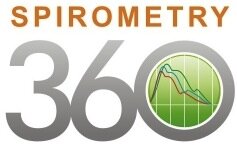360 express
360 Express rapidly trains users to coach patients to perform high-quality diagnostic spirometry. Participants are provided the tools they need to properly coach a spirometry test, identify and correct common errors, and work with patients of all ages.
How it works:
Complete Spirometry Fundamentals and the Coach 1 and Coach 2 Learning Labs. These training modules will give you the skills you need to confidently perform high-quality spirometry tests.
Coach 1: Performing a Good Maneuver: Learn how to perform a good maneuver. Learning objectives are based on the American Thoracic Society guidelines for performing good quality spirometry.
Coach 2: Fixing Common Errors: Learn how to recognize common errors and how to correct them, using simple and patient-centric approaches.
Submit a set of five spirometry tests for review by Spirometry 360 faculty (4 out of 5 must receive a passing grade).
If your first set of tests do not pass, we will work with you one-on-one to identify where you are having difficulty before you submit a second set of tests for review.
Spirometry 360 Express - Provider Plus
If you are interested in learning about spirometry interpretation, Spirometry 360 - Express Plus offers the addition of our Provider and Provider/Coach Combined Learning Labs to the Spirometry 360 Express course.
Provider: Interpreting Spirometry Results: Learn how to evaluate normal and abnormal spirometry for providers who will be interpreting the test and making clinical decisions. The learning objectives include how to recognize a good quality test, how to distinguish normal lung function from obstruction, how to recognize reversible obstruction, and when referral for further evaluation is appropriate.
Provider/Coach Combined: Putting Spirometry into Practice: Learn how to incorporate spirometry into a primary care-based planned visit model. Using proven strategies for quality improvement and system change, participants are given a variety of Guidelines-based resources to accomplish this aim. Clinical guidelines for asthma and COPD are also reviewed.

